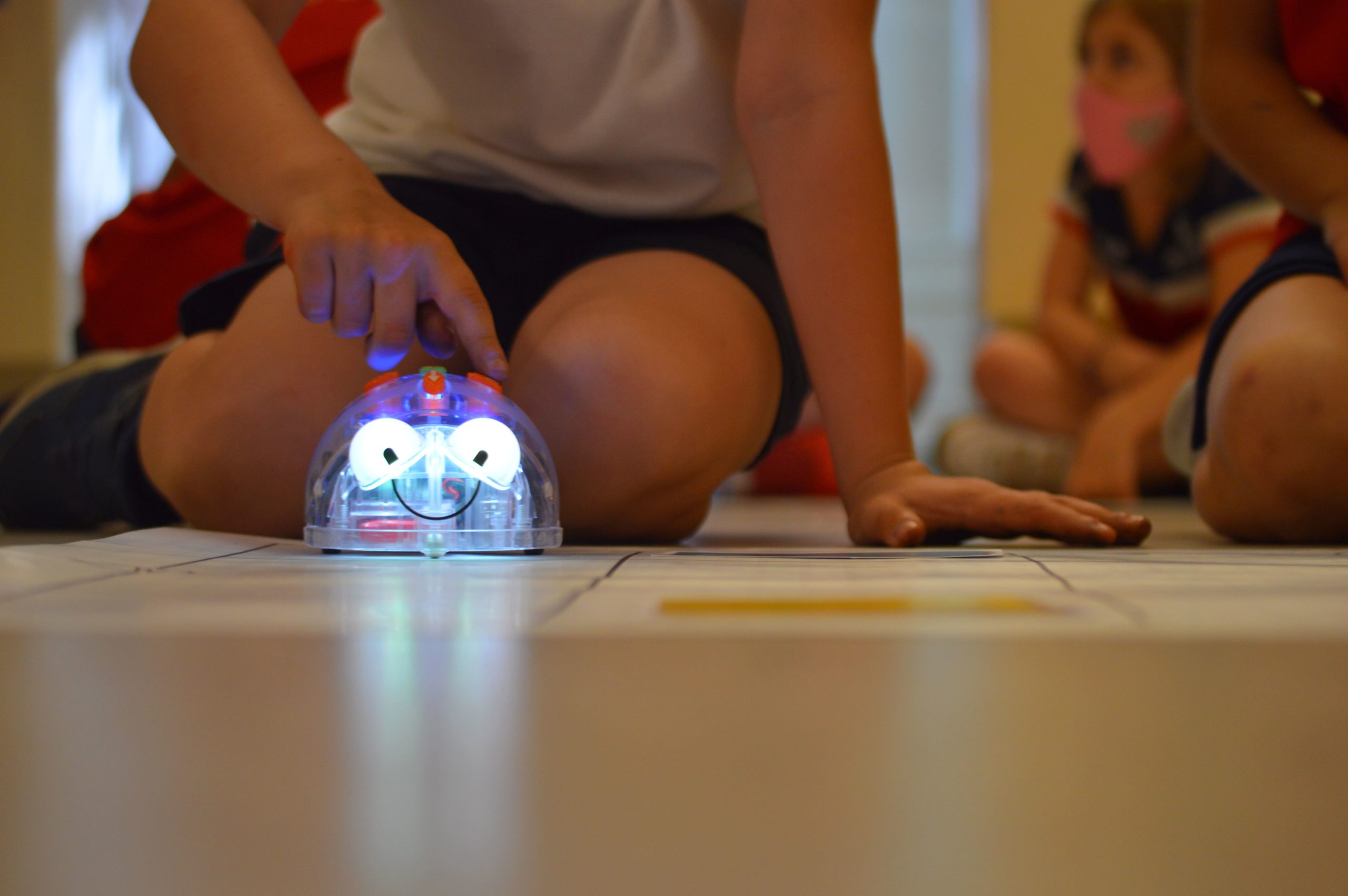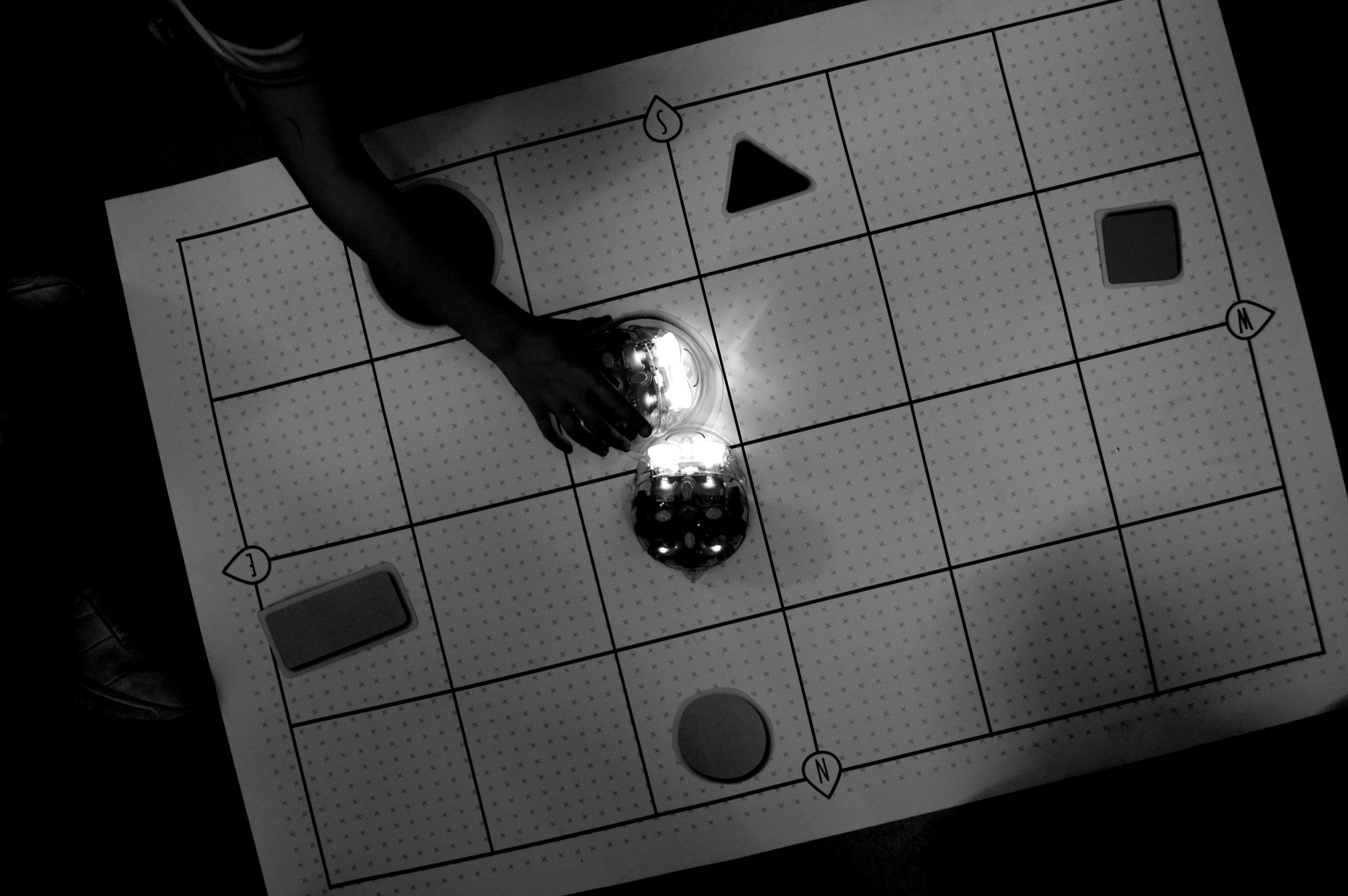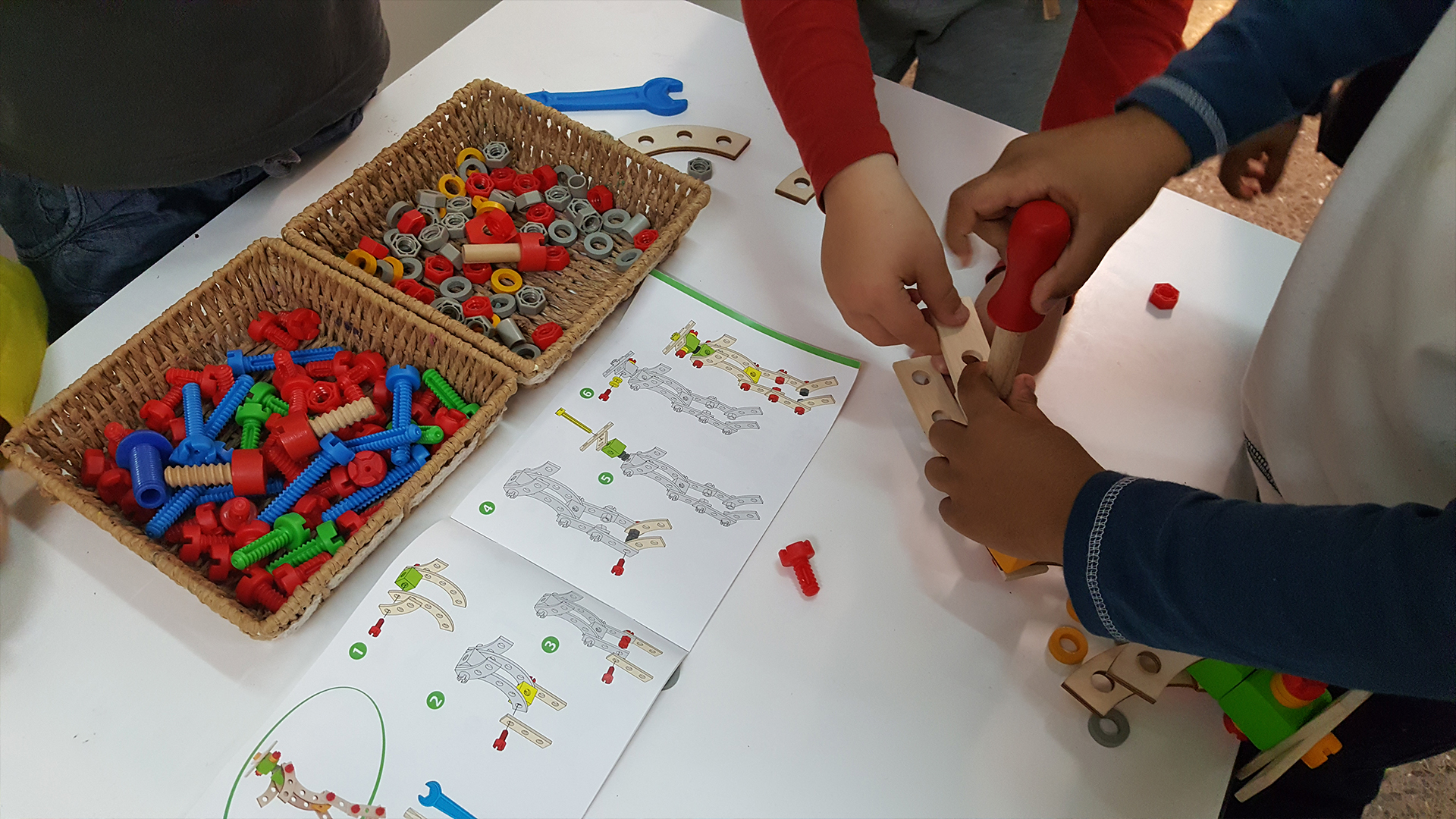Computational thinking
Classroom Experience
Introduction to robotics in kindergarten
Las Cumbres, Ciudad Autónoma de Buenos Aires, Argentina. Show map
Using the game Travelers to introduce the basics of robotics in kindergarten.

Context
Las Cumbres school has a middle-class learning community with access to technologies and applications. Since the educational project is based on technological development, the proposal is to introduce robotics in early childhood education.
Highlights...
This proposal can be done with children aged 4 to 9.
The idea is to use various games to introduce robotics through different activities that encourage the learning of other topics, such as vocabulary.
The interdisciplinary project goes from kindergarten to primary school in order to foster the continuity of the robotics project.
Objectives
Introduction to robotics
Learn the basic commands in robotics and the coding language.
Learn a foreign language
Learn English through games.
Foster collaboration
Foster cooperative work and role definition.
Didactic sequence
1
![]()
Analog game
Make a large board where kids can walk as if they were robots. One of the kids must activate a command to tell the student on the board whether to go forward, turn, go back, etc.
2
![]()
Introduction to Travelers game
Tell students about the project and the game instructions.
3
![]()
Try the game
Make students try some game sessions to understand how the bots work in practice.
4
![]()
Play the game
While students play again, the group's autonomy is verified by making them use the appropriate vocabulary according to the established instructions.
Assessment and conclusions
Successes
Introducing robotics through a game was successful because it caught the group's attention and enthusiasm.
A great quantity of robotics vocabulary ("command") as well as English vocabulary on traveling (bus, travel) was introduced.
Things to improve
There is no chance factor in this game, which means it can't be played endlessly. Once it is played a number of times, the group gets to know its mechanism and it is no longer news to them.
This rewarding interdisciplinary experience sets the basis for the development of collaborative work, using a language that is specific to the dynamics and that gets more and more complex in the following educational levels. Students are assessed on how they achieve group autonomy as they complete the tasks.

Take this experience to your classroom!
Tips to adapt the experience to your classroom
1
Computational thinking
Introduction to robotics doesn't necessarily require bots. It can be introduced analogically with associated computational thinking.
2
Time of sessions
In early education it is ideal to have several short sessions, instead of a long one, to move forward with the goals.
3
Play the game
As teachers, we should play the game beforehand to learn about its dynamics and possible scenarios.





